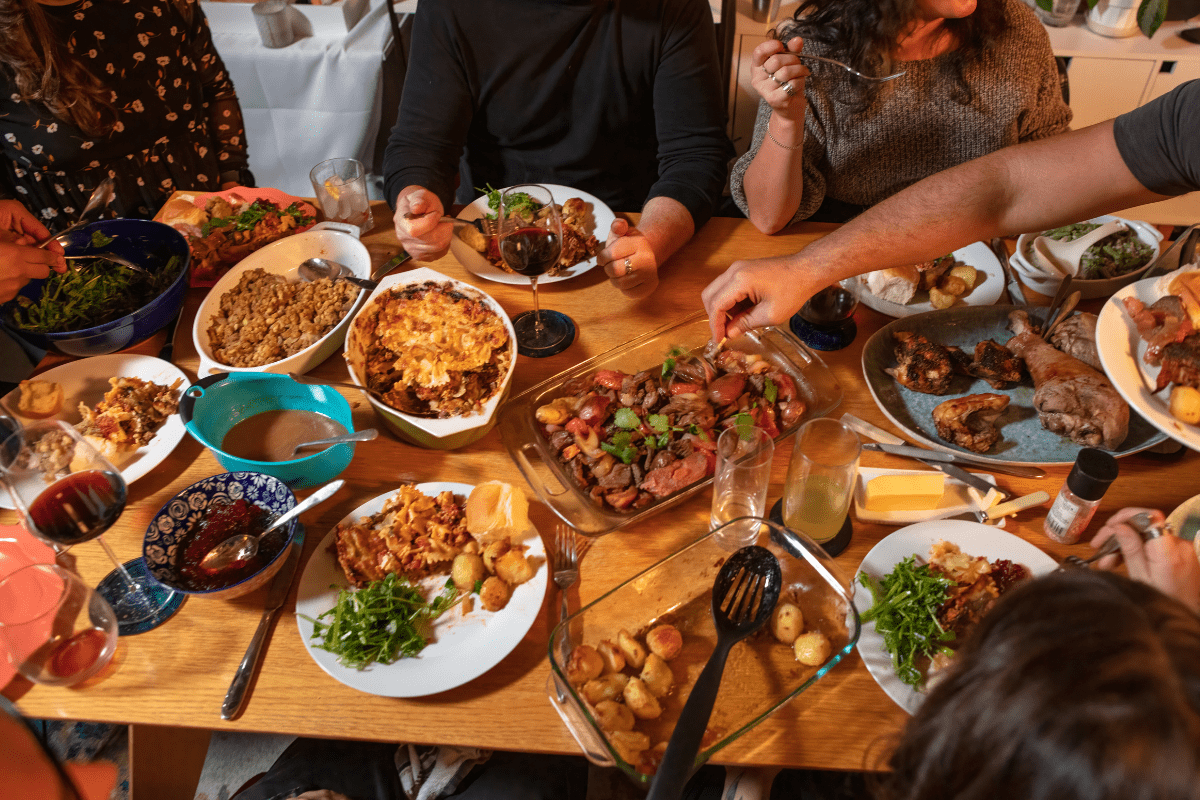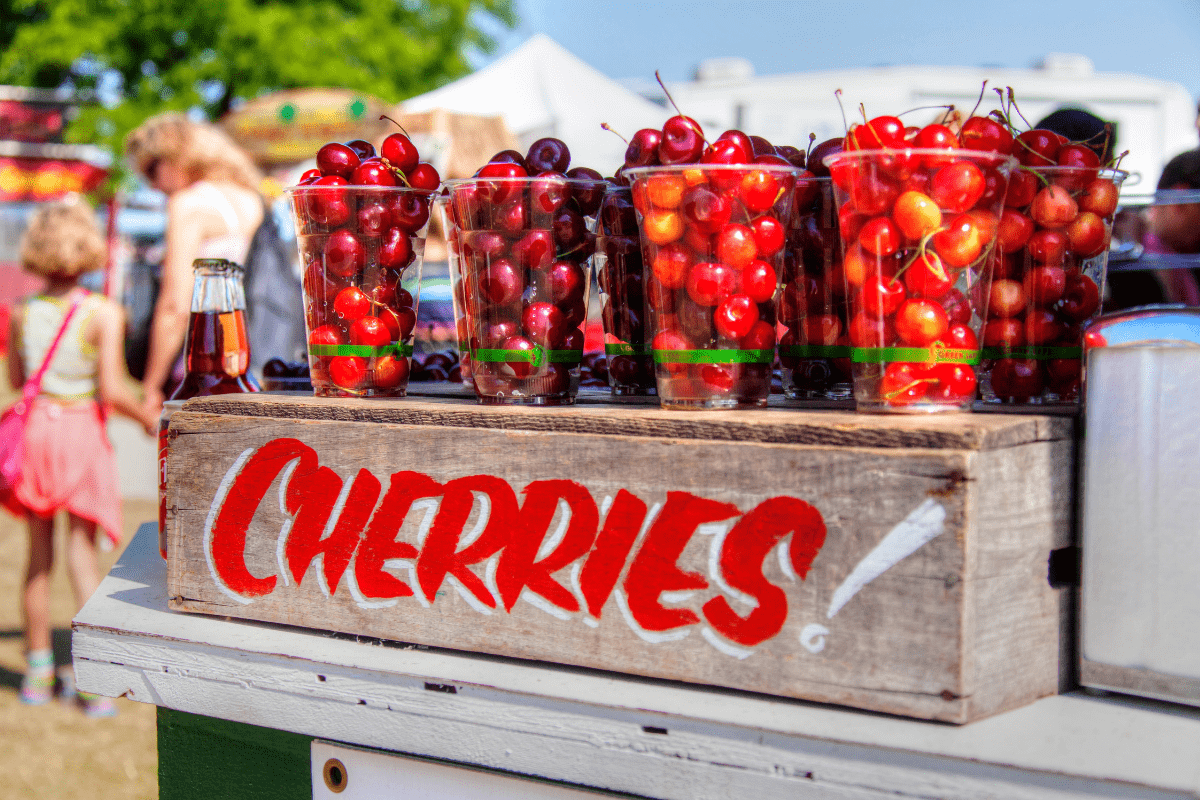Michigan might not be the first place you think of when someone mentions American food destinations, but maybe it should be. The state produces more varieties of agricultural products than anywhere except California, and its food scene tells the story of American industry through immigrant kitchens and factory lunch counters.
The Great Coney Dog Wars
Let's start with the elephant in the room, or rather, the hot dog on the plate. Michigan's Coney dogs have absolutely nothing to do with New York's Coney Island, and locals will happily explain this to you at length.
The Michigan Coney emerged in the early 1900s when Greek and Macedonian immigrants needed to feed Detroit's booming automotive workforce something quick, cheap, and satisfying. What they created was a natural-casing hot dog topped with beanless chili (made with beef heart, which sounds weird but tastes amazing), diced white onions, and yellow mustard stripes, all nestled in a steamed bun.
Detroit's century-old sibling rivalry
The most famous Coney feud started in 1917 when brothers Gust and William Keros had a falling out and opened competing restaurants literally next door to each other on Lafayette Boulevard.
American Coney Island uses Dearborn Sausage hot dogs with a spicier homemade chili, while Lafayette Coney Island goes for pork dogs from Eastern Market with National Chili and Spanish onions that give it a sweeter taste. Both places are still there, still run by descendants of the original owners, and Detroiters still argue passionately about which is better. (For what it's worth, locals seem split about 50-50, though Lafayette tends to get longer lines.)
Regional Coney variations
Not to be outdone, other Michigan cities developed their own Coney styles:
- Flint's version features drier meat sauce
- Jackson claims the original Michigan Coney from 1914
- Each city guards its recipe secrets
- Abbott's Meat still supplies Flint's base
- Local spice blends make each unique
The Flint Coney, developed by Macedonian immigrant Simion Brayan in 1919, uses a drier, finer-textured sauce that locals insist is superior to Detroit's "sloppy" version. Jackson's Todoroff's Original Coney Island might actually be Michigan's first, predating the Detroit spots by a few years.
Pasties: Hand Pies from the Mines
Head north to Michigan's Upper Peninsula, and you'll discover that Coney dogs aren't even the state's most controversial food. That honor goes to the pasty (pronounced PASS-tee, and yes, tourists giggle).
Cornish miners brought these hearty hand pies to the Copper Country in the 1850s, where Michigan's brutal winters and dangerous mining work demanded portable, calorie-dense meals. The traditional Michigan pasty contains cubed beef (never ground, that's fighting words), potatoes, onions, and rutabaga. Yes, rutabaga. Some people substitute carrots, which causes heated debates at church potlucks across the UP.
Where tradition lives on
Lehto's Pasties in St. Ignace has used the same recipe since 1947, featuring a thin, flaky crust made with suet and ingredients that are sliced, not diced. The current owners, Laurie and Bill Walker, are keeping the family tradition alive from the original US-2 location.
Other legendary pasty shops include:
- Lawry's Pasty Shop in Ishpeming
- Jean Kay's Pasties in Marquette
- Cousin Jenny's in Traverse City
- Numerous roadside stands along US-2
- Gas station warmers (desperation only)
Finnish, Swedish, and Italian immigrants each put their spin on the pasty. Modern versions include everything from venison to pizza pasties, though purists stick to beef and rutabaga, served either plain or with ketchup (another source of endless debate).
Cherry Capital of America
Drive northwest to Traverse City, and you'll understand why Michigan license plates feature cherries. The state produces 75% of America's tart cherries, thanks to Lake Michigan's moderating effect on the climate.
The cherry industry began in 1852 when Reverend Peter Dougherty planted the first trees on Old Mission Peninsula. Today, the annual National Cherry Festival attracts over 500,000 visitors who come for pie-eating contests, cherry pit spitting competitions, and enough cherry-themed foods to turn anyone slightly pink.
Beyond cherry pie
Sure, cherry pie is great, but Traverse City has moved way beyond grandma's dessert:
Cherry Republic stocks over 200 cherry products, from cherry salsa to cherry-covered everything. Their motto "Life, Liberty, Beaches & Pie" pretty much sums up the local attitude.
The Cherry Hut, operating since 1922, ships their famous pies nationwide. But the real innovation happens in local restaurants where chefs use cherries in:
- Barbecue sauces for venison
- Cherry gastrique with duck
- Cherry-infused craft cocktails
- Savory cherry chutneys
- Cherry wine reductions
- Even cherry hummus
Nearly 50 area wineries produce cherry wines, and Traverse City Whiskey Company makes cherry whiskey that would make your grandfather reconsider his bourbon loyalty.
The Melting Pot Bubbles Over
Michigan's regional cuisines read like an immigration history textbook, but way more delicious. Each wave of newcomers adapted their traditional foods to local ingredients and industrial work schedules.
The Upper Peninsula blends Northern European traditions into a unique food culture. You'll find Finnish nisu bread, Swedish Trenary Toast (seriously addictive cinnamon toast), and Italian cudighi sausage, all preserved by the region's isolation and winters that make you question your life choices.
Polish power in Hamtramck
Hamtramck (pronounced ham-TRAM-ick, don't ask why) was once so Polish that Pope John Paul II visited in 1987. While demographics have shifted, the Polish food remains strong. Pączki Day brings thousands seeking these pre-Lenten donuts that make regular donuts look like diet food.
New Palace Bakery, founded in 1908, still makes pączki the traditional way. Polonia Restaurant serves pierogis and kielbasa to third-generation customers who remember when the menus were only in Polish.
Middle Eastern meets Midwest
Dearborn hosts one of America's largest Middle Eastern populations outside the Middle East. The result? Some of the best shawarma, falafel, and fresh pita you'll find anywhere, often served alongside very American french fries.
Other cultural food pockets include:
- Frankenmuth's German bratwurst scene
- Holland's authentic Dutch bakeries
- Detroit's Greektown district
- Mexican flavors in Southwest Detroit
- Native American wild rice dishes
Speaking of Native American contributions, they provided Michigan cuisine's foundation through Three Sisters agriculture (corn, beans, squash), wild rice harvesting, and maple syrup production. The Native American Community Development Institute works to maintain these traditions in urban areas.
Homegrown Brands That Conquered America
Some of Michigan's most successful food exports started in somebody's basement or pharmacy. Take Vernors ginger ale, created in 1866 by Detroit pharmacist James Vernor, making it America's oldest surviving ginger ale.
The legend says Vernor aged his experimental drink in oak barrels while serving in the Civil War, returning to discover the vanilla-heavy "golden" ginger ale that Michiganders consider medicine for everything from upset stomachs to broken hearts. Mix it with vanilla ice cream and you get a Boston Cooler, which has nothing to do with Boston but everything to do with Detroit's Vernon Highway.
The pop culture phenomenon
Faygo started in 1907 when Russian immigrant brothers Ben and Perry Feigenson decided their cake frosting flavors would make great sodas. They were right. Rock & Rye (cherry-vanilla cream) and Redpop (strawberry) remain Michigan favorites, and the brand has been name-dropped in over 130 songs.
Then there's Better Made Potato Chips, founded in 1930 by Sicilian immigrants Cross Moceri and Peter Cipriano. They process 60 million pounds of Michigan potatoes annually, and Detroiters consume 7 pounds of chips yearly compared to 4 pounds nationally. That's dedication.
Other Michigan food giants include:
- Kellogg's in Battle Creek
- Jiffy Mix from Chelsea
- Gerber baby food
- Little Caesars Pizza
- Domino's Pizza
- Hungry Howie's
That Jiffy Mix story is particularly charming. In 1930, Mabel White Holmes helped a single father improve his biscuits during the Great Depression, creating America's first prepared baking mix. The company still operates from Chelsea, still family-owned, still making those little blue and white boxes.
The New Michigan Food Scene
Something interesting happened when Detroit's economy crashed. Chefs started moving in, attracted by cheap rent and customers hungry for new experiences. James Rigato's Mabel Gray in Hazel Park just won USA Today's 2025 Restaurant of the Year.
"Detroit will keep attracting people like me: chefs," Rigato explains, citing low operating costs and freedom to experiment. When your rent is a fraction of New York or San Francisco, you can take risks with pickled ramps and smoked lake trout.
Farm-to-table goes full Michigan
The farm-to-table movement found fertile ground in Michigan. Farm Club in Traverse City grows 90% of its vegetables on 9 acres. Detroit's Coriander Kitchen operates as the city's only restaurant that's literally both farm and table.
Top farm-focused restaurants include:
- Selden Standard in Detroit
- Farm Club in Traverse City
- Salt of the Earth in Fennville
- Zingerman's Roadhouse in Ann Arbor
- The Cook's House in Traverse City
These aren't precious places with three peas on a plate. Michigan's farm-to-table scene reflects its working-class roots with generous portions of locally raised meat, just-picked vegetables, and artisanal breads that actually fill you up.
Beer City and beyond
Michigan's craft beverage scene exploded from the state's brewing heritage. With over 400 breweries generating $290 million in tax revenue, beer has become serious business. Grand Rapids earned the "Beer City USA" title, though Kalamazoo's Bell's Brewery and Grand Rapids' Founders Brewing Company put Michigan on the craft beer map.
The beverage innovation extends to:
- Craft distilleries making whiskey
- Urban wineries in Detroit
- Meaderies using Michigan honey
- Cideries crushing local apples
- Coffee roasters sourcing globally
What's Next for Michigan Food
The numbers tell an interesting story. Michigan's food and agriculture system contributes $104.7 billion annually to the state economy, employing 805,000 people. But the restaurant industry faces challenges, with only 25% reporting sales growth and 57% understaffed by 10% or more.
Still, recognition keeps coming. Twelve Michigan establishments earned 2025 James Beard Award semifinalist nods. Chef Frank Turchan, 2023 Michigan Chef of the Year, points out that "Michigan is No. 2 behind California for varietal produce."
Tourism's tasty impact
Food tourism drives serious money, generating $5.2 billion in visitor spending with 11 million additional trips in 2021. Events like:
- National Cherry Festival
- Pączki Day celebrations
- Tulip Time in Holland
- Beer festivals statewide
- Restaurant weeks in major cities
These festivals celebrate Michigan's culinary heritage while attracting visitors seeking authentic regional experiences beyond the usual tourist traps.
The Bottom Line on Michigan Food
Michigan's food scene uniquely balances preserved immigrant traditions with contemporary innovation. You can get a Coney dog from a century-old lunch counter for breakfast, grab a pasty from a UP gas station for lunch, and enjoy a James Beard-nominated chef's tasting menu for dinner.
As Detroit chef Javier Bardauil puts it, "We are in an amazing moment." That moment tastes like beef heart chili, rutabagas, tart cherries, and craft beer, all served with a side of Midwest hospitality and industrial-strength pride.
For food lovers, Michigan offers compelling reasons to venture beyond the coasts. Whether you're debating Coney supremacy in Detroit, hunting for the perfect pasty in the UP, or sipping cherry wine overlooking Grand Traverse Bay, you're experiencing a regional cuisine that tells the real story of American food: immigration, innovation, and the occasional food fight between brothers.
The Great Lakes State's culinary identity, forged in factory lunch pails and immigrant kitchens, now stands ready to compete with America's most celebrated food destinations. Just don't call it a comeback. Michigan's been serving great food all along; the rest of the country is finally paying attention.



